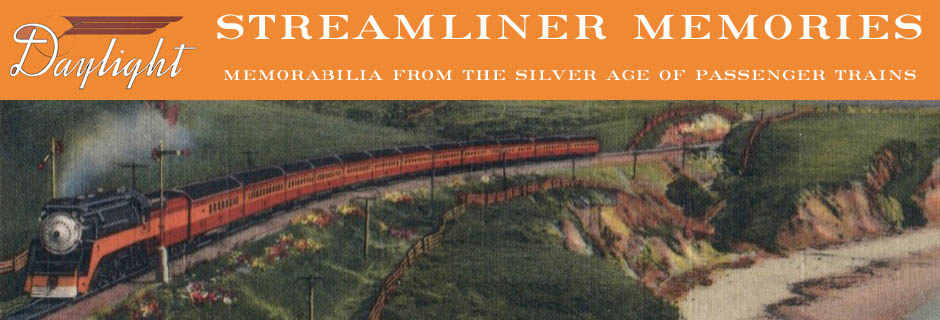Burlington included five full-page ads and one page with two half-page ads in this timetable. This is similar to 1939 and 1940 timetables. Among the full-page ads in this one are ones for the Exposition Flyer and a back-cover ad encouraging people to “visit 3 wonder spots on 1 Burlington ticket,” meaning Colorado, Glacier, and Yellowstone parks. A half-page ad invites people to write for a copy of Burlington’s 1941 booklet of escorted tours.
 Click image to download a 27.0-MB PDF of this 44-page timetable.
Click image to download a 27.0-MB PDF of this 44-page timetable.
The ad on the other half of that page promotes the Buffalo Bill, a short-lived train between Denver and Cody. The timetable on page 15 explains that this train operated three days a week by from June 25 through August 30. This train began operating in 1937 (when it went from June 23 through September 3) and continued through 1941. It did not run in 1942 for obvious reasons and was not revived after the war.
The train consisted of one or more chair cars, a diner, one or more sleepers, and an observation-lounge car. This was one of the few trains that went as a solid train all the way to Cody, which was 40 miles off of the main line between Denver and Billings. Sleeping cars from Chicago and other cities went to Cody by being detached from whatever train they were on and hauled the last 40 miles from Deaver, Wyoming.
These and some of the other ads in this timetable were similar, and in one case identical, to ads in the 1939 or 1940 timetables. But a completely new ad announces that “the Burlington is ready . . . for defense or peace.” Seeing “war clouds forming on the horizon,” the ad said, the Burlington “has acted to add three thousand new freight cars and thirty new locomotives to its rolling stock.”
 Burlington President Ralph Budd in his role as Commissioner of Transportation for the National Defense. Library of Congress photo attributed to “Purdy.”
Burlington President Ralph Budd in his role as Commissioner of Transportation for the National Defense. Library of Congress photo attributed to “Purdy.”
There’s a story behind this ad. The federal government had taken over the railroads during the First World War and President Roosevelt was ready to do so again if the U.S. entered the second. But Burlington President Ralph Budd persuaded him that the railroads would be able to handle wartime traffic as well or better than the federal government could do if it ran the railroads.
Budd, one of the most highly respected railroad officials in the nation, must have made quite an impression on Roosevelt. At that time, the federal government didn’t have a department or secretary of transportation, so instead of a federal takeover, in 1940 Roosevelt named Budd his “Commissioner of Transportation.” From that office, Budd coordinated the railroads to work together to meet wartime demands.
